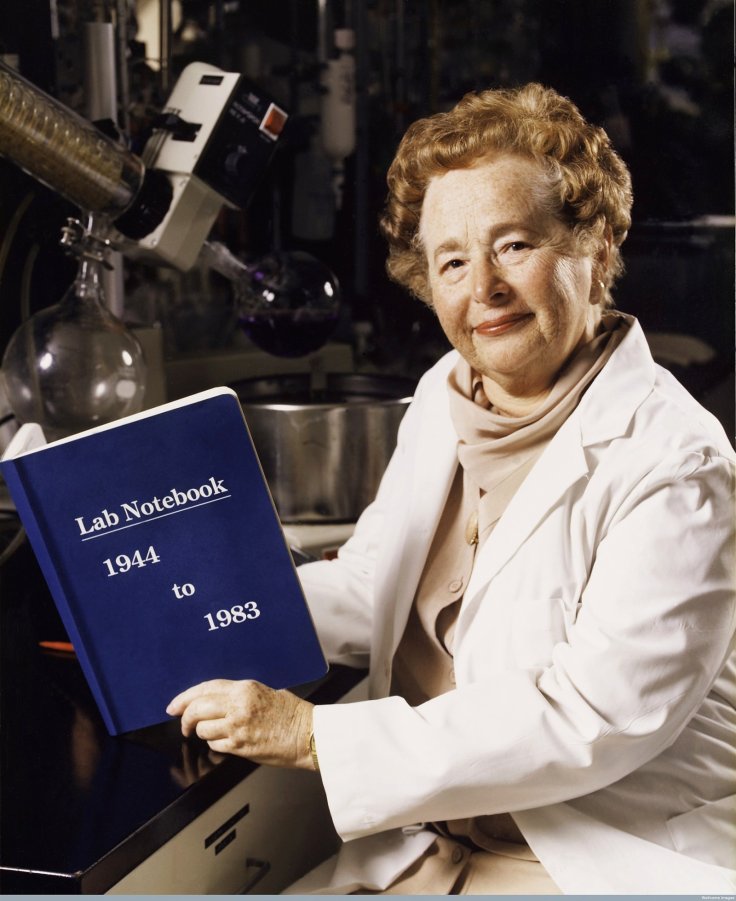Not so long ago, developing drugs to treat viral diseases was considered an impossible task. Those drugs were not only toxic with a flurry of side-effects but also not so effective. Scientists then occasionally stumbled upon compounds that could be effective against viral diseases.
Now, as doctors and scientists search for an antiviral drug to treat COVID-19 patients, the situation is more or less the same. But unlike the 1950s, today, doctors are equipped with plenty of drugs that are useful for virus-borne illnesses. And they have Gertrude Elion to thank for.
Who is Gertrude Elion?
The American biochemist was born to East European migrants during the Spanish Flu pandemic in 1918 in Manhattan, New York. Elion completed her bachelor's degree in chemistry from Hunter College in 1937. But bankrupted by the Great Depression, her parents didn't have the means for her to continue pursuing higher studies. The programs she had applied didn't have financial aid either.

Furthermore, women in those days didn't find a place in laboratories and despite applying in many, she was turned down despite her qualification. Elion faced sexism and was thought to be "a distracting influence" on other staff. She had to find temporary jobs and pursued a masters' degree at New York University on weekends and nights.
However, as World War II created a shortage of staff, she finally managed a job at Johnson & Johnson and later Burroughs Wellcome, which is now part of GSK (GlaxoSmithKline), reported National Geographic. Thus, she began her quest in biochemistry. There, along with her superior George Hitchings, Elion went on to pioneer antiviral drugs that would go on to help millions of people and doctors, which eventually conferred on them the Nobel Prize in 1991.
Scientific Approach to Developing Drugs
Till the 1970s, drugs were discovered accidentally or through trial-and-error methods. Even revolutionary penicillin, which pioneered antibiotic treatment, was an accidental discovery by Alexander Fleming. But Hitchings offered a scientific approach. He believed that pathogen cells could be restricted from replicating by making defective copies of those. He assigned Elion to work on compounds that could achieve that.
Thus, Elion began her journey. She started working on nucleosides, the structural base of DNA. But she didn't know what purines were. However, after going through a lot of literature about purines (components of nucleic acids), she made compounds that were never described before.
"Trudy was making nucleosides before we even knew what the structure of DNA was. That's how well she understood the chemistry," said virologist Marty St. Clair, who started working under Elion in 1976.
With Hitchings, Elion developed their first drug 6-mercaptopurine in 1951 collaborating with New York's Memorial Sloan-Kettering Cancer Center. The drug revolutionized the way cancer was treated at that time. It increased the cure rate for acute lymphoblastic leukemia (ALL) in children from 10 to 80 percent. Together, they developed pyrimethamine (now known as Daraprim) for malaria and toxoplasmosis, anti-biotic trimethoprim for urinary tract infection among many others.

Quest for Antivirals
While she already succeeded in antibiotic development, Elion didn't pursue antivirals aggressively. In 1948, she had a little success when she synthesized diaminopurine for cancer treatment. It was also efficient as an antiviral but she was not convinced after studying the toxic effects of the drug. During those days, scientists did not believe viral diseases could be treated with drugs as viruses were impossible to separate from the host cells.
But when Hitchings left the lab in 1968, Elion focused on diaminopurine after stumbling across a report. She assembled a group of "diligent and devoted scientists" to continue studying the compound. In the next four years, they developed acyclovir, an antiviral for herpes.
The drug was presented in 1978 in Atalanta and it was nothing people had seen that time. Acyclovir had a low toxicity. University of Washington medical school's Director of molecular virology laboratory, Keith Jerome, said acyclovir "changed everything."
"It proved it was possible to develop highly specific drugs that targeted viruses without causing unwanted side effects," he said.
Elion called the drug "final jewel" as it was the last drug she developed during her time at the Burroughs Wellcome. But acyclovir pioneered the way other antivirals would be developed in later years including AZT (azidothymidine) which was the first approved drug to treat HIV. Although AZT is moderately effective against HIV, the method has been used to develop many antivirals since then.
"Trudy showed us we could do this. That, things that people thought were impossible are not impossible," said St. Clair, who used Elion's methods to develop AZT.









